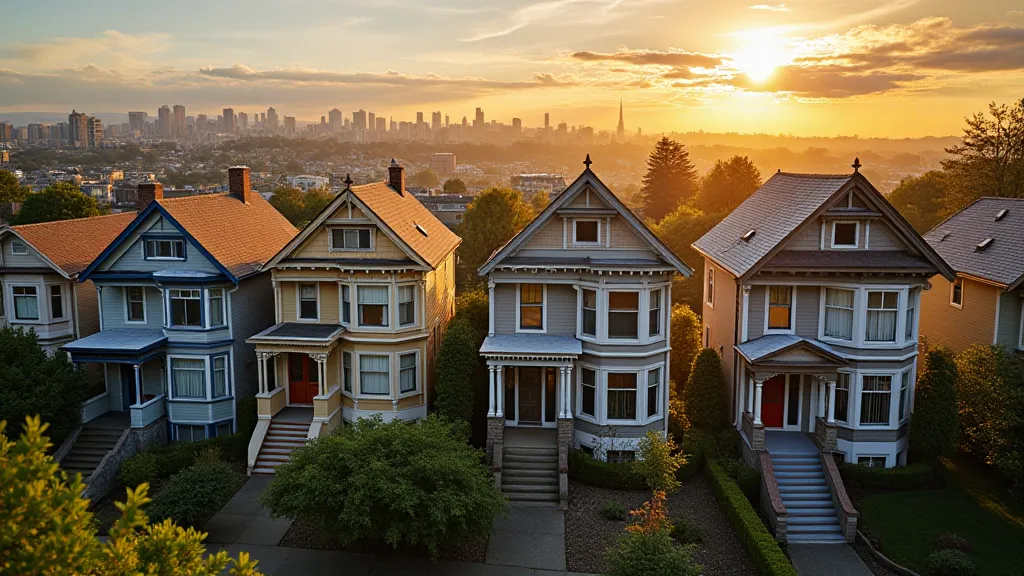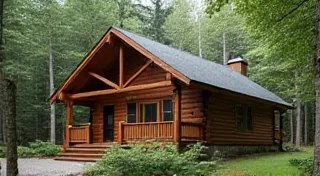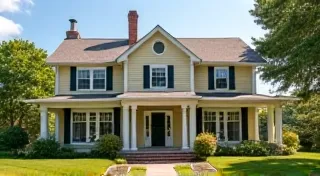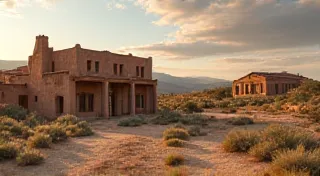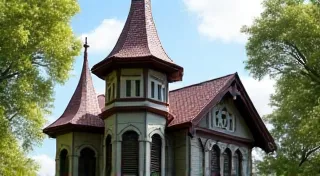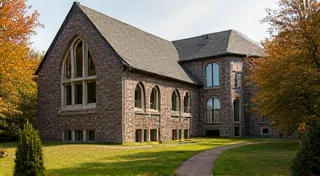The Queen Anne Style in the Pacific Northwest: Victorian Grandeur Meets Timber
The Queen Anne architectural style, born in Victorian England, found a unique and fascinating adaptation across the Pacific Northwest. While rooted in the ornate detailing and asymmetrical forms characteristic of its origin, the region’s builders and homeowners incorporated readily available local timber and responded to the landscape, creating a distinctive regional variant. This article will explore the key features of the Pacific Northwest Queen Anne style, highlighting its beauty and historical significance. Understanding the evolution of architectural styles often reveals deeper insights into a region's history and the values of its inhabitants, much like the resilience showcased in Midwestern Farmhouse Architecture.
Origins and Influence
The Queen Anne style, named after Queen Anne of England, flourished from the 1870s to the early 1900s. It was a reaction against the more rigid styles that preceded it, embracing eclectic design and a desire to showcase individuality and prosperity. The style's popularity in the Pacific Northwest coincided with a period of significant economic growth fueled by timber, mining, and agriculture, leading to increased demand for well-designed homes and public buildings. This era of prosperity and innovation saw a surge in architectural experimentation, a spirit also evident in movements like the Gothic Revival in New England, which sought to evoke a sense of the past and grandeur.
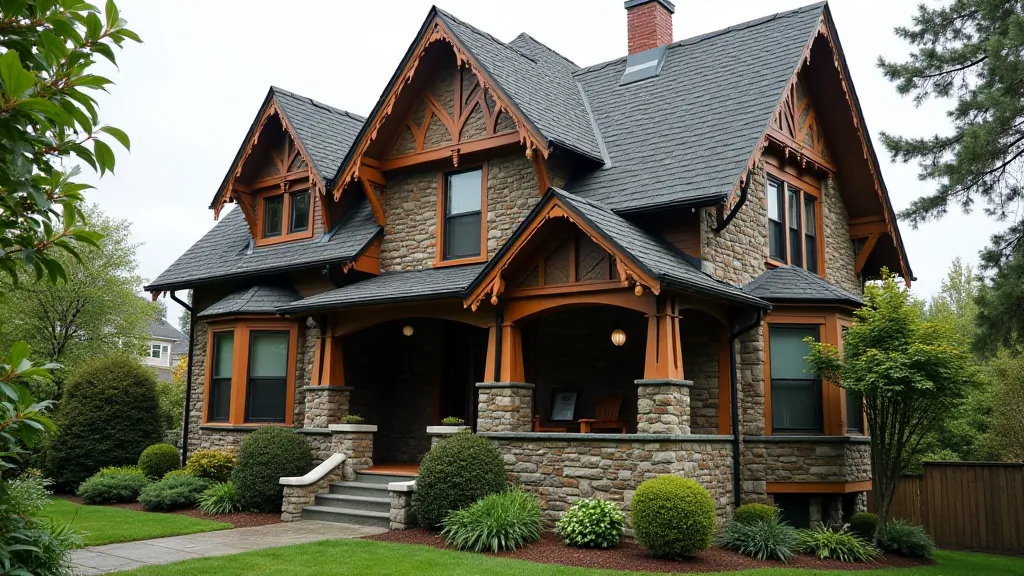
Key Characteristics: A Regional Adaptation
While retaining core Queen Anne elements, the Pacific Northwest adaptation demonstrates several notable deviations influenced by the regional environment and building practices:
- Timber Dominance: Unlike the brick and stone often used in Eastern Queen Anne examples, the Pacific Northwest style heavily favors timber framing and cladding. This was a natural choice given the abundance of readily available, high-quality lumber. Cedar and Douglas fir were particularly favored, lending a warm, reddish tone to many facades. The practicality of using locally sourced materials resonates with the spirit of adaptation found in architectural expressions across various regions, a concept familiar to those appreciating styles like Arkansas Folk Victorian architecture.
- Simplified Ornamentation: While still ornate, the Pacific Northwest Queen Anne style often features slightly simplified ornamentation compared to its English counterparts. Carving patterns, though intricate, are often less dense and more focused on natural motifs inspired by the surrounding forests and mountains. This restraint, while seemingly contradictory to the exuberance of Victorian design, speaks to a unique regional aesthetic.
- Emphasis on Asymmetry: The hallmark of the Queen Anne style - its asymmetry - is amplified in the Pacific Northwest. Houses are often set at angles to the lot, and additions and wings are incorporated in unexpected ways, creating a dynamic and visually engaging appearance. The desire to break from rigid formality was a defining characteristic of the era, and it manifested in various ways across the nation.
- Bay Windows & Turrets: Prominent bay windows and turrets remain essential elements, although they are frequently constructed with timber framing and often incorporate stained glass windows depicting local flora and fauna. The combination of architectural flourish with practical construction methods created a truly unique look.
- Wraparound Porches: Large, wraparound porches are common, encouraging outdoor living and providing ample space for enjoying the region’s relatively mild climate. These porches, integral to the Pacific Northwest lifestyle, serve as both functional extensions of the home and welcoming spaces for socializing.
Common Materials & Details
Beyond timber, other characteristic materials found in Pacific Northwest Queen Anne buildings include:
- Slate Roofing: Durable and aesthetically pleasing, slate was a popular choice for roofing. The use of slate, while reflecting a desire for permanence and quality, also added to the overall elegance of the structures.
- Stained Glass: Intricate stained glass windows were frequently incorporated into bay windows, front doors, and transoms, adding color and detail. These windows not only provided natural light but also served as miniature works of art, showcasing a mastery of craftsmanship.
- Fish Scale Pattern Shingles: These shingles, with their overlapping pattern resembling fish scales, added a unique texture and visual interest to exterior walls. This distinctive feature became a hallmark of the Pacific Northwest Queen Anne style, setting it apart from its Eastern counterparts.
- Decorative Brackets: Elaborate wooden brackets often adorn eaves and porches, adding depth and visual complexity. The intricate detailing on these brackets demonstrates the skill and artistry of the local carpenters.
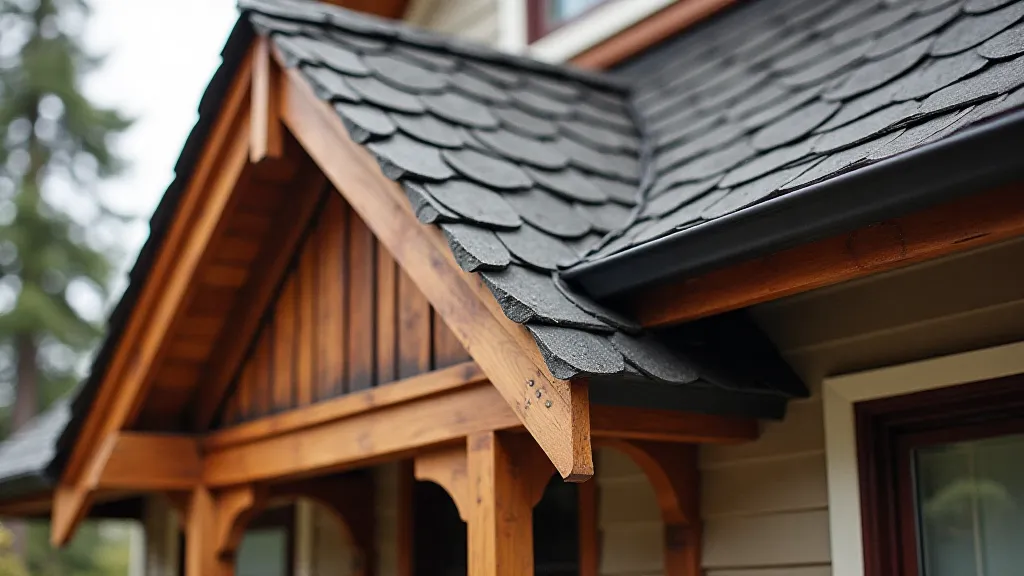
The Evolution of Design Choices
The distinctive look of the Pacific Northwest Queen Anne style wasn't born in a vacuum. It was a product of necessity, ingenuity, and artistic inspiration. The region's climate, readily available resources, and the cultural values of its inhabitants all played a role in shaping the style. The adaptability of homeowners and builders also contributed to the unique character of these homes. Consider how the desire to blend with the landscape resulted in a more organic and less imposing architectural presence, departing from the often-more formal designs prevalent elsewhere. Furthermore, the economic landscape of the time greatly influenced material choices; readily available timber made brick and stone significantly more expensive and less common. This practical consideration combined with the aesthetic desire for warmth and natural beauty created the signature look of the Pacific Northwest Queen Anne style.
Notable Examples & Preservation
Several cities in the Pacific Northwest boast impressive collections of Queen Anne architecture. Seattle, Portland, and Victoria, British Columbia, are particularly rich in examples. Many of these historic buildings have been carefully preserved and restored, offering a glimpse into the region's architectural heritage. Preservation efforts are crucial in maintaining a tangible link to the past and educating future generations about the craftsmanship and ingenuity of those who came before. These structures serve as lasting monuments to a unique blend of Victorian grandeur and regional innovation. The careful restoration work often involves matching original materials and construction techniques, a challenging but rewarding endeavor that requires both expertise and a deep appreciation for the style's aesthetic qualities. The enduring popularity of these homes reflects their timeless appeal and the sense of connection to history they evoke.
Beyond the Aesthetic: Social and Economic Context
The popularity of the Queen Anne style in the Pacific Northwest coincided with a period of rapid economic growth and social transformation. The influx of settlers, fueled by opportunities in timber, mining, and agriculture, created a demand for well-designed homes that reflected their newfound prosperity and aspirations. These homes served as symbols of success and status, showcasing the owners’ ability to afford the finest materials and craftsmanship. Beyond the purely aesthetic considerations, the architecture of the time reflected a broader shift in values, away from the rigid formality of earlier eras and towards a greater emphasis on individuality and personal expression. The architecture of the period isn't just about buildings, but about the social fabric and aspirations of the community. The architectural choices were reflective of deeper cultural shifts and the spirit of a burgeoning frontier. The construction boom and the emphasis on personalized design can be compared to the efforts to create distinct regional identities that persisted throughout American history.
A Legacy of Victorian Grandeur
The Queen Anne style in the Pacific Northwest represents a remarkable fusion of Victorian aesthetics and regional building practices. It stands as a testament to the creativity and resourcefulness of the builders and homeowners who shaped the region's architectural landscape, leaving behind a legacy of stunning and enduring beauty. The adaptation of this style reflects the unique character and resources of the Pacific Northwest, making it a distinctly regional and cherished architectural treasure. The style's continued influence can be seen in modern architectural trends that seek to incorporate elements of historic design with contemporary sensibilities. The enduring appeal of the Queen Anne style in the Pacific Northwest underscores the power of architecture to shape our environment and enrich our lives. These buildings are more than just structures; they are living embodiments of a unique cultural heritage.
